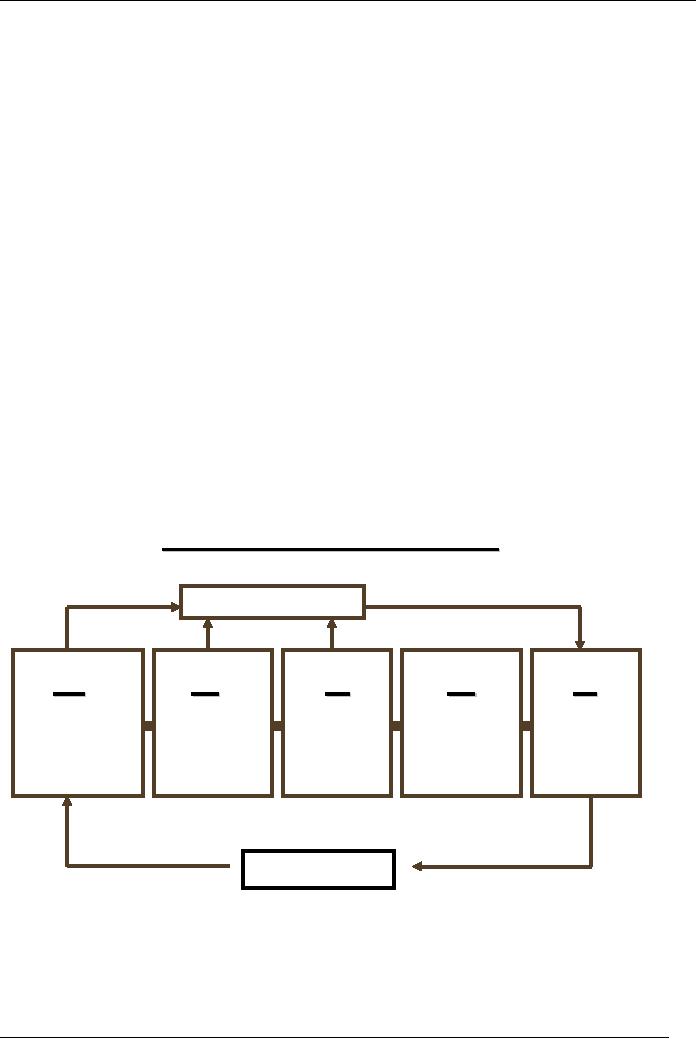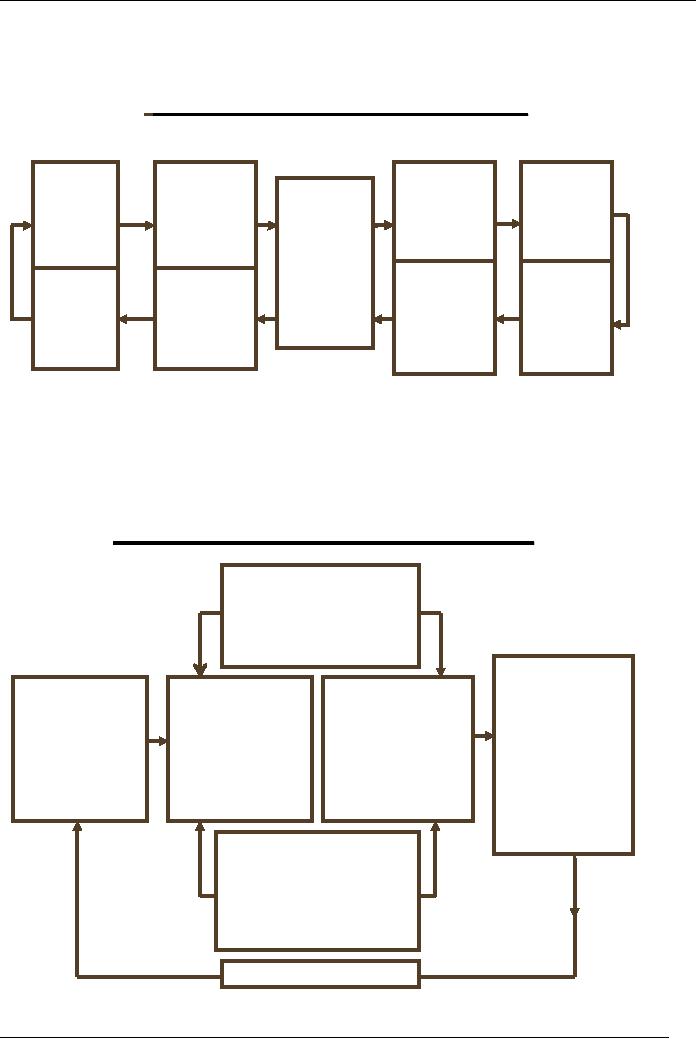 |

Advertising
and Promotion (MKT621)
VU
Lesson
14
WORKING
OF ADVERTISING
LECTURE
OVERVIEW
Continuing
with the subject advertising
this lecture will cover its
working ,illustrate
various
communication
models ,message and media mix
factors. .
WORKING
OF ADVERTISING
·
Advertisement should raise
awareness and change brand
attitudes.
·
Advertising should provide
strong reasons "Why"
a specific brand is
superior.
12
Steps to develop effective
campaign
1.
Identifying target market &
positioning
2.
Deciding advertising
objectives.
3.
Kind of communication effects
needed.
4.
How consumers respond to
advertising.
5.
Decide the theme.
6.
Develop the campaign.
7.
Decide the advertising appeal.
8.
Develop copy plat
form.
9.
Formulate message
strategy.
10.
Media Mix.
11.
Schedule, frequency & pattern of
ad. release
12.
Evaluation of campaign.
BASIC
COMMUNICATION MODEL
NOISE
S
M
C
M
R
sender
coded
decoded
message
channel message receiver
source
(ad.)
(target)
(advertiser)
(agency)
(media)
FEED
BACK
34

Advertising
and Promotion (MKT621)
VU
TWO
WAY COMMUNICATION MODEL
coded
coded
source
sender
message
message
receiver
(S)
(M)
channel
(M)
(R)
(C)
decoded
source
receiver
receiver
message
sender
(M)
(S)
(R)
(R)
An
Interactive (2 way) communication model
ADVERTISING
COMMUNICATION MODEL
NOISE:
External
·
Public
opinion
·
Marketing
strategy
RECEIVER:
MEDIA
MIX:
Message
MESSAGE:
SOURCE:
Channels
reception
Encoding
Advertiser
(one
- way &
&
response:
Strategy
&
(objectives)
Two
way)
.
Perception
Tactics
.
Learning
(by
agency)
.
Persuasion.
.
Action
NOISE
: Internal
Perceived
needs,
Information
process
attitudes,
opinions
and
others
FEED
BACK
35

Advertising
and Promotion (MKT621)
VU
SOURCE
or THE ADVERTISER
·
Advertiser
and Advertising agency are
the sources.
·
They
decide objectives for
campaign in terms of impact
from the message.
Effects
are
PERCEPTION
LEARNING-PERSUASION & BEHAVIOUR (
SALES )
(Message
effectiveness factors chart)
Key
Message Effects
Surrogate
Measures
Communication
Tools
Perception
Exposure
Advertising
;Public relations(PR)
Attention
Advertising
; sales promotion
Interest
Advertising
; sales promotion; PR
Memory:
recognition/recall
Advertising
; sales promotion; PR
Learning
Understanding
Public
relations; personal
selling
Direct
marketing ; advertising
Image
and association
Advertising
; PR., point of
purchase
Brand
links
Ads
etc.
Persuasion
Attitudes:
form or change
Public
relations :personal
selling
Preference
/ intention
Sales
promotion
Advertising
:Public relations
Emotions
and involvement
Personal
selling
Conviction,
belief,
Personal
selling & direct
marketing
commitment
Behavior
Trial
Personal
selling; direct
marketing
Purchase
Sales
promotion; personal
selling
Direct
marketing
Repeat
purchase, use
more
Sales
promotion; personal selling,
Direct
marketing
Noise
is any factor that hinders or distorts the
delivery of advertising message to
the
target
audience.
EXTERNAL
FACTORS
INTERNAL
FACTORS
Marketing
strategy
Target
Audience need purchase
history
General
Pattern of consumer trends
Information
process ability.
Competitors
marketing communication
Level
of avoidance of advertising.
Public
opinion.
36

Advertising
and Promotion (MKT621)
VU
MESSAGE
& MEDIA MIX FACTORS
Message
Key Factors.
·
Analysis
of marketing & advertising
strategy
·
Target
Audience.
·
Media
Mix Key Factors.
·
A
Message reaching a target
audience.
·
Effectiveness
of media plan
·
Best
chance of delivering the
message.
·
Different
media mix required to reach different
target audience
THE
RECEIVER:
Message
Reception and Response
THINK
FEEL
DO
Learning
Persuasion
Behavior
37
Table of Contents:
- INTRODUCTION TO ADVERTISING:Its growing importance, Explanation of Personal and non-personal selling
- INTRODUCTION TO ADVERTISING:ADVANTAGES, Communication, Information, Various Media
- INTRODUCTION TO ADVERTISING:FUNCTIONS OF ADVERTISING, IMPACT OF ADVERTISING
- ADVERTISING AND SOCIETY:PRACTICAL BENEFITS, ETHICS IN ADVERTISING, Marketplace & Market space
- MARKETING TOOLS:COMPONENTS OF MARKETING MIX, PRODUCT LIFE CYCLE (PLC) CURVE
- MARKETING TOOLS:SWOT Analysis, Contents & Structure, ROLE & FUNCTION OF ADVERTISING
- ROLE AND FUNCTIONS OF ADVERTISING:Structure of an Advertising Agency, How to Select an Advertising Agency
- ADVERTISING PLANNING:ADVERTISING OBJECTIVES, Types of Advertising, Positioning Strategies
- POSITIONING:BRANDING, 7 Steps of Creative Process, UNIVERSAL ADVERTISING STANDARDS
- ADVERTISING MESSAGE:Message Content, BASIC TERMS & CONCEPTS
- ADVERTISING BUDGET:4 Methods to determine, ADVERTISING RESEARCH, ADVERTISING RESEARCH
- ADVERTISING REACH:BROAD COMMUNICATION OBJECTIVES, ADVERTISING COPY METHODS, MEDIA RESEARCH
- PRE – PLACEMENT EVALUATION:ACCOUNT PLANNING, MARKET, COMPETITION
- WORKING OF ADVERTISING:12 Steps to develop effective campaign, SOURCE or THE ADVERTISER
- ADVERTISING RESPONSE HIERARCHY MODELS:AIDA MODEL, PROCESS REQUIRED TO GET BIG IDEA
- PROBLEM SOLVING STRATEGIES:Procedure to Handle Problems, In brief, Eight principles apply to consumer behavior
- CONSUMER BEHAVIOUR:ADVERTISING APEALS, MEDIA MIX DECISIONS, Target Rating Point (TRP)
- CREATIVITY IN ADVERTISING:Three aspects are most accepted, Four Rules of Creativity
- COPY WRITER:CHARACTERISTICS OF COPYWRITER, IMPORTANCE OF LANGUAGE
- WHY ADVERTISING:Advertising & Market Education, ADVERTISEMENT CAMPAIGNS
- METHODS TO APPRECIATE A PROBLEM:SPONSORSHIP—an important tool, Special Characteristics
- IMPORTANT TOOL OF ADVERTISING:TELEVISION ADVERTISING, TRANSIT ADVERTISING
- ONLINE ADVERTISING:Banners, Logos, Email Ads, Keywords on Search Engines, New Developments
- ONLINE ADVERTISING:Structural Challenges, Adobe Photoshop, JAVA, HTML, DHTML, ASP & JSP
- SALES PROMOTION:Consumer Oriented Promotion, HOW TO USE TRADE PROMOTION, Dealing with the Trade
- PUBLICITY:PERSONAL SELLING, ROLE OF SALES PERSON, FUTURE OF GLOBAL ADVERTISING
- MARKETING ENVIRONMENT:Competitors, The Target Buyer, Segmenting your Market, FUTURE OF MARKET GROWTH
- MARKETING PLAN:Situational Analysis, Macro – Environment Situation, Marketing Objectives, Financial Objectives
- MARKETING PLAN:PROMOTING BUSINESS IN LOW COST, SUPPLY CHAIN, BUYER IDENTIFICATION
- HOW TO BE GOOD CLIENTS:CHANNEL BUYERS, HOW TO BE GOOD CLIENTS 14 RULES
- CLIENT – AGENCY RELATIONSHIP:HOW TO KEEP CLIENTS (10 Ways), Three Points for Consideration
- CLIENT – AGENCY RELATIONSHIP:ADVERTISING WITHOUT AN AGENCY, LOGO AND CORPORATE IDENTITY
- NEWSPAPER ADVERTISING:AD PRODUCTION,TYPES OF NEWSPAPER ADS, CIRCULATION
- OTHER ADVERTISING MEDIUM:HOW TO USE MAGAZINES, HOW TO USE RADIO, Daypart buying options
- UTILITY OF VARIOUS MEDIA:TAPE OR FILM, UTILITY OF TV, DIRECT MAIL PACKAGE
- OTHER ADVERTISING MEDIA:POINT OF PURCHASE (POP), TRANSIT ADVERTISING, LIMITS OF ADVERTISING
- CONTINUOUS TRACKING:PLANNING CAMPAIGN, HOW TO UNDERSTAND ADS, ASK BASIC QUESTIONS
- SEASONAL ADVERTISING:MAXIMIZING IMPACT, THE WEB ADVERTISING, MEASURING ADVERTISING
- COMPONENTS OF ADVERTISING:BUY - OLOGY OF MIND, BUY - OLOGY OF MIND
- CRITICISM ON ADVERTISING:SHOULD ADVERTISING BE ABOLISHED,
- EFFECT OF ADVERTISING:HOW TO PROMPT AWARENESS, CREATING DESIGN THAT SELLS
- CREATING EFFECTIVE DESIGN:LANGUAGE OF TYPOGRAPHY, HEADLINES THAT COMMUNICATE
- WORKSHEETS:DEMOGRAPHICS OF YOUR TARGET, YOUR COMPETITOR
- GLOSSARY OF ADVERTISING:ACCOUNT EXECUTIVE, PROOF, VOICE OVER
- CONCEPT OF AN AD:HOW TO DEVELOP A CONCEPT OF AN AD